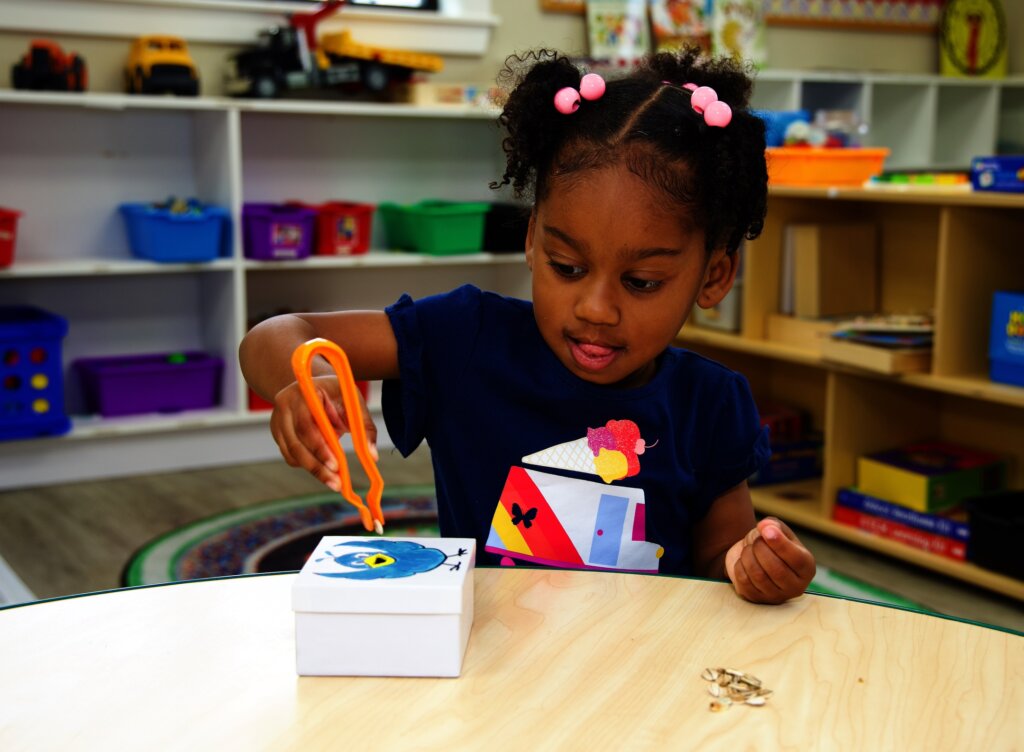May 15, 2024 / Blog
Ideas for Differentiated Instruction in Early Childhood Education
Early childhood is a period of rapid growth and development, both academically and socially. Each young learner is as unique as a fingerprint, brimming with curiosity, imagination, and endless possibilities for their future. As educators, we aim to meet the unique needs of each child in our classrooms. Differentiated instruction is a powerful tool that provides the support, structure, paths to succeed, and challenges to grow to build a strong foundation for children’s future learning.
What is Differentiated Instruction?
At its core, differentiated instruction is about recognizing each child’s needs and creating meaningful learning experiences to meet those needs. Instead of using a one-size-fits-all approach for the whole class, educators tailor their instruction to accommodate the learning styles, interests, and abilities of each child. In other words, it’s about meeting children where they are and providing multiple pathways for success!

Ideas for Implementing Differentiated Instruction in Early Childhood Education
In early childhood, children exhibit a wide range of abilities and learning styles, making it essential for educators to differentiate their instruction. Here are some examples of methods and strategies educators can use to support children of all levels, backgrounds, and abilities in the classroom:
Incorporating Movement & Sensory Exploration
- Using songs, rhymes, and movement activities to introduce new concepts and reinforce learning in a fun, memorable, and engaging way.
- Providing a variety of sensory materials (e.g., sand, water, playdough) for hands-on exploration to cater to different learning styles.
- Presenting new concepts in short segments and incorporate as many of the child’s senses as possible.
Adaptations & Flexibility
- Adapting lesson plans to incorporate shorter, interactive activities and mindful movement breaks based on attention spans and energy levels.
- Introducing concepts that are easy for children to master before moving on to more complex tasks.
- Allowing children to use alternative materials for art projects, such as finger painting instead of brushes, to accommodate different preferences and abilities.
- Offering age-appropriate flexible seating options to support children who may need to move around or have difficulty sitting still during circle time.
Communications & Choice
- Using choice boards with pictures or symbols for children to select activities based on their interests (e.g., building blocks, painting, pretend play).
- Speaking in a child’s native language or using sign language as other forms of communication.
- Encouraging children to share their thoughts and ideas during group discussions or circle time, fostering a sense of belonging and empowerment in the learning process.
Child-Centered Learning & Play
- Incorporating children’s interests and experiences into lessons, such as using toy animals for a counting activity or incorporating favorite storybook characters into dramatic play scenarios.
- Providing opportunities for child-directed play and exploration, with open-ended materials (e.g., blocks, loose parts) that encourage creativity and problem-solving.
- Pairing children of different abilities together as “peer buddies” to help each other complete an activity and nurture friendships.
One Size Does NOT Fit All
Children learn best when their teachers acknowledge and accommodate their interests and abilities. Here are some key principles to keep in mind when differentiating instruction:
- Diverse Needs: Children have different skills levels and abilities; your instruction should be tailored to address their needs in a way that fosters confidence and inspires joyful learning.
- Flexibility: Be open to trying new things! There are many ways to adapt your teaching strategies, materials, and assessments to meet the needs of your learners.
- Centering the Child: Placing children at the center of the learning process builds confidence and empowers them to take ownership of their learning journey.
Differentiated instruction is not just a teaching strategy; it’s a philosophy that celebrates the uniqueness of every child. Here at Frog Street, we are committed to this philosophy and strive to support educators in implementing it successfully. By applying the principles and strategies of differentiated instruction, educators can create joyful learning experiences that empower all young learners to succeed.
Frog Street’s continuum of curriculum provides educators with a wealth of activities, strategies, and tips for successfully implementing differentiated instruction in the classroom. Want to learn more? Contact us today!
